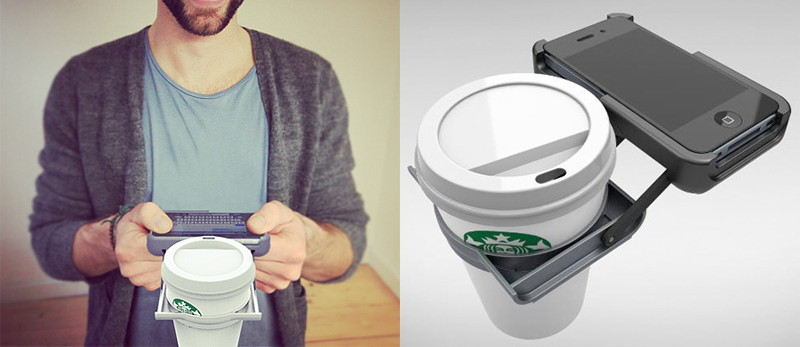The road leading to creating a successful product is complicated and winding. There are tons of elements, risks and requirements that your team has to take into consideration. After all, it is understandable that you want to minimise the risk of failure. And that’s why you should create a product vision board. With this simple yet effective tool, you can organise your future product’s vision, write down all the important data and create a good base for further work. Moreover, clear product vision helps in motivating and inspiring the team. So let’s see what product vision boards are all about.
In the Project manager vs. product manager article, we showed you how complex is the work of every product manager. These professionals oversee the whole creation process, manage the product’s development and optimisation and make sure it stays relevant in the changing market circumstances. However, a path leading to a new product, whether it’s physical or digital, always starts with an idea – a vision. You have to know what you want to achieve and what is your ultimate result that will amaze the market. And that’s why you need a product vision board.
What is a product vision board?
In essence, it’s a very simple tool that can be used even with a piece of paper and a pen. It’s a table used to map and organise all the most important elements related to your brand-new product. A product vision board is frequently referred to as a product vision canvas, and it’s quite an accurate name – just like a canvas contains everything you want to put on your painting, the product vision board has everything you want to put in your product.
In its basic form, a product vision board should consist of five crucial elements, but you will also find some product vision board templates consisting of up to nine sections. Let’s discuss them one by one.
What should the product vision board include?
For starters, let’s talk about those five basic elements.
Vision
Here, you put everything you want your product to be. What problems will it solve? Who will it help? Why will it be different from competitive products? How will it change the market? Why do you want to make it?
In fact, vision is an essential part of the job. To be successful, your product vision should be:
- Inspiring and motivating (for difficult times)
- Ethical
- Concise and memorable
- Big and ambitious
- Not tide to a specific solution (concentrate on the idea, not the technology)
Target audience
It’s time to be a bit more specific. Concentrate on buyer personas – who will use this product and what for? What are the needs and challenges of your target audience? Why do they need such a product? How will it make their work/life better or more effective? Thanks to such analysis, you won’t turn to the wrong audience needs, which would have a disastrous effect on your product. In other words, you must know who is NOT your target audience.
Needs
How will your future product answer the specific needs of its users? And what are those needs? Why do they need solving? Are there any other ways of dealing with a given need?
Product
Here, you put everything related to your product. Can it be done? Do you have all the tools and experience necessary to finish it? How much will it cost? What will be its features? Why will it be better than the competition?
Business goals
How will this new product benefit your business? Will it help you achieve your business goals more easily? How will it make your company or its image better?
This is the foundation of your new product. The more detailed information and data you can collect, the better. The more you know, the more risks you can mitigate, thus increasing the chances of your product’s success. As we mentioned earlier, there are also product vision boards that are made of nine sections. Let’s take a look at these additional four categories.
Competitors
Will your product have any competitors? Are they better/worse/less/more expensive? Do they solve the same problem effectively? Are they appreciated by the market? Or maybe they lack some vital features or functions that you will offer?
Revenue streams
How will you make money on this product? How will you ensure high sales of your product? What will you do in the early stage when there is just a little awareness of it? This way, you can help your team create flows that lead users to the right sales and marketing channels.
Costs
How much will it cost to develop a prototype and then start the production process? What are the costs associated with developing, manufacturing and updating your product? What should be the product’s price to ensure that you get a reasonable profit and maintain its attractiveness simultaneously?
Channels
What are the communication and sales channels you indent to use? Where will your product be available to buy? Are you going to work with distributors and wholesalers or will you limit yourself just to e-commerce? What social media will you use and how?
This way, you can gather in one place everything there is to know about your product and its development and sales strategy. In fact, a product vision board can be very useful because it helps you stay focused. And with such a board, the risk of neglecting one or more important product-related areas is close to none.
Product vision board template
The main idea behind a product vision board is to keep it simple. You don’t need complex software or graphic skills to create a comprehensive product vision board. In fact, you can create your own product vision board template within a few minutes, and all you need is a piece of paper and a pen.
Take a look at our product vision board template:
If you want to extend your product vision board, just add more sections to it. Remember that a product vision board is not a one-fits-all tool. You should tailor it to the needs and projects pursued by your organisation.
Product vision board – pros and cons
Pros
Product vision boards are very useful in every product development process, primarily because they are so simple and versatile. With a properly designed product vision board, you can:
- Stay focused on the development of your product
- Pinpoint all the crucial challenges and risks involved in the process (as well as establish the opportunities for growth)
- See a bigger picture of your idea
- Analyse the current market situation and the competition
- Easily pitch your idea to investors and other stakeholders
- Gather everything there is to know about your product in one place (easily accessible for all team members)
Cons
Of course, a product vision board is not a perfect tool. For starters, such a list never tells you everything. There can be serious problems and issues hidden between different sections, making them difficult to spot. For example, you could have a very good idea (seemingly) that ticks all the right boxes but, for some reason, is pointless to pursue. Maybe people don’t view the problem you try to solve as something pressing?
Some time ago, The Plain Magazine published a list of pointless products. One of them was an iPhone cupholder:
Do you think that you could create a product vision board justifying such a product? Without a doubt! It's feasible; it solves a common problem (holding a smartphone and a cup of coffee at the same time), and it has a broad target audience.
But no one views this idea as something worth pursuing, so we don't see such holders on the market. That's why it's so essential to remember one thing – a product vision board does not have all the answers. You still need to use common sense and other tools to ensure that the idea you execute is worth your time and money.
Summary
To sum up, we’d like to share some useful tips that will help you make your product vision board more effective. Here’s what you should keep in mind:
- Focus on the main idea/features; all the other questions can be polished in the process, but the general vision is what matters.
- Solve problems with features/functions, not the other way round. If you want a successful product, start with the PROBLEM, not with the PRODUCT.
- Enable every involved person and party to see and work with the product vision board.
- Don’t mix a vision and a strategy. These are not the same things. First, you need a product vision along with all the listed elements. And when it’s done, you can switch to concretising your vision and turning it into a strategy.
- Always, always, always make sure your product makes sense.
Follow all these suggestions, and you are on your way to designing a product that the market will love! And if you’re after designing a digital product and you need some help with the process, we are at your service. Book a free consultation today, and let’s see what we can do together!
Author
Related articles
![A well-crafted prompt doesn’t just work once. It works across teams, channels, and campaigns. It can be tweaked for new use cases and refined based on what performs best.]()
June 27, 2025 / 4 min read
Prompts are marketing assets: how to reuse, and scale them
Prompts aren’t throwaway lines. They’re repeatable, scalable assets that can streamline your marketing your team’s output. Learn how to build a prompt library that delivers.
![Woman using a wheelchair in the office settings]()
June 17, 2025 / 5 min read
What is accessibility and why it matters?
Accessibility ensures everyone — including those with disabilities or limitations — can read, navigate, and engage with your content equally.






